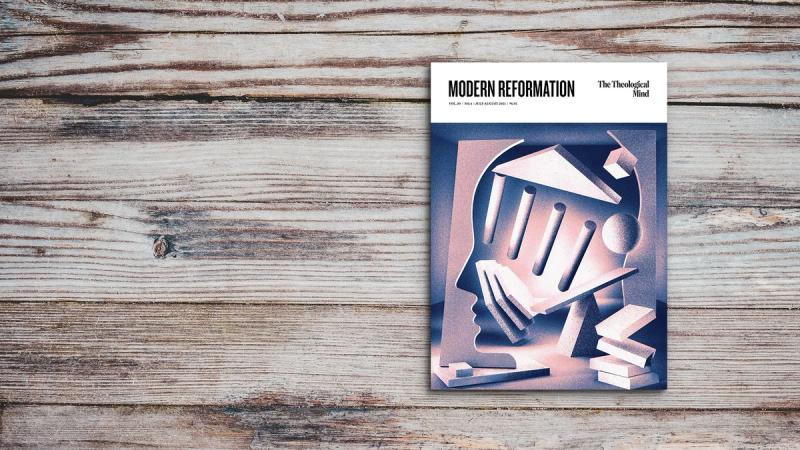Worshiping with the Reformers
By Karin Maag
IVP Academic, 2021
248 pages (paperback), $24.00
Karin Maag is probably not a household name among Modern Reformation readers. Yet she has for some time been well-known and respected among historians of the Reformation. Worshiping with the Reformers is a rare glimpse, written at a popular level, of her vast research into the worship practices of the Reformation. The goal she attempts in this work is by no means an easy one—to sketch the various worship practices of all the major religious sects in the Reformation: the Anabaptists, Lutherans, Roman Catholics, Reformed, and the Church of England. Each of these would seemingly require their own volume if one were attempting to describe carefully and accurately how they worshiped. Maag, however, succeeds in her goal. She has written a work popular enough to survey the worship practices of the differing Reformation traditions without getting bogged down in the details, yet accurate and detailed enough to be of some benefit for making sense of these differences. Notably, Maag herself is acutely aware that even though she attempts to paint a faithful picture of such various groups, these “worship practices were not set in stone within any one confessional group, nor were confessional borders rigorously policed. In other words, there was more flexibility and diversity in Reformation-era worship practice than one might think” (4).
One of the main goals of Worshiping with the Reformers is to describe not only the various worship practices among early modern Protestant and Roman Catholic communities but also to explain why there exists such variety. In other words, Maag’s project is descriptive of the great diversity of early modern worship practices, while also including the logic behind these practices. For example, why did many of the Reformed eschew religious images in their churches? Or, why did Anabaptists insist on baptizing adult believers? These questions, and many others like it, shape the main content of Maag’s work. We have already noted the diversity within traditions; but one of her other conclusions, evident throughout the book as she surveys early modern worship, is that there was also a significant amount of continuity among the differing theological perspectives. As she puts it,
Whether Catholic, Lutheran, Anglican, or Reformed, clergy and government leaders alike expected punctual attendance, quiet and reverent attention, and active participation in worship services. They all condemned those who arrived late or left early, who gossiped or chatted with their neighbors, or who failed to turn up at all. (198)
Maag observes that changes to communal worship by church leaders or the civil magistrates often begat a multitude of difficulties. In accordance with the adage that “old habits die hard,” so medieval worship traditions as they inevitably bumped into reformational changes proved quite difficult to get rid of. Indeed, what happens when the civil magistrate forbids, in the name of stomping out superstition, parents from naming a child after the name of a relative simply because that name happened to be one of the legendary names of the three wise men? Issues like these may seem crazy to us today, but such conflicts were a direct result of the changing theological landscape of early modern Europe (99–100). With a dose of healthy skepticism, Maag consistently accounts for the often wide gap between what the civil magistrates or church leaders had in mind for a particular community and what was actually feasible to reform given local traditions and the local populace’s wants and needs.
Each main chapter follows a fairly predictable—yet admittedly welcome—structure. Maag usually begins with an early modern vignette or two highlighting the importance of or controversy surrounding a given worship practice. She then enumerates the various questions and debates that surrounded a particular worship practice, finally expounding on each of these questions through the lens of the various religious groups. So, in chapter 6 touching on the Lord’s Supper, she begins with a controversy that arose in 1543 among the Lutherans over how leftover consecrated wine was to be properly dealt with. She then summarizes the various theologies of the Lord’s Supper among the five aforementioned groups and looks at the practice of this sacrament from various angles. Accordingly, she describes how they prepared generally for Communion, how they prepared for their first Communion, the relationship between Communion and church discipline, the frequency of Communion, whether the place where the elements were set aside in worship should be described as altars or tables, its elements, and how Communion itself was taken. As we can see, it’s quite comprehensive, albeit short and to the point. Moreover, were someone so inclined to read more on a given subject, each chapter includes a helpful bibliography at the end for further reading.
Maag’s Worshiping with the Reformers is perhaps most insightful precisely because it was not written by a generalist but by a historian of the period. Her book, unlike other treatments of early modern worship, provides a corrective to modern myths that have been perpetuated about the period. Accordingly, she pushes back against the popular and polemical but ultimately misguided notion that just because Protestants emphasized preaching, sometimes juxtaposing it with Roman Catholic practices, medieval worship or Roman Catholics minimized the role of preaching (e.g., 51–52). Readers might be surprised to find that one of the decrees of the Council of Trent, known for its anathemas against Protestantism and Protestant distinctives, decreed that “all bishops, archbishops, primates, and all other prelates of the churches be bound personally—if they be not lawfully hindered—to preach the holy Gospel of Jesus Christ” (61).
Worshiping with the Reformers is a model for how popular Reformation history ought to be written. It rests on primary and secondary literature, overturns some common polemical tropes about the Reformation, and furnishes us with an easily accessible and a reliable portrait of early modern Christian worship among Protestants and Roman Catholics. If you fall into either group, one can safely say you will come away knowing better what your tradition believes, why they believed it, and how they have practiced such belief.
Michael J. Lynch teaches language and humanities at Delaware Valley Classical School in New Castle. He is the author of John Davenant’s Hypothetical Universalism: A Defense of Catholic and Reformed Orthodoxy (Oxford University Press, June 2021).







